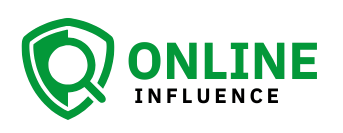In today’s digital landscape, businesses increasingly rely on cloud-based solutions to manage their customer relationships, streamline operations, and enhance productivity. Salesforce, one of the leading customer relationship management (CRM) platforms, is widely used across various industries. However, like any technology, it is not immune to vulnerabilities. Understanding these vulnerabilities is crucial for organizations to safeguard their sensitive data and maintain their reputation.
Salesforce vulnerabilities can arise from several factors, including misconfigurations, insufficient access controls, and third-party integrations. These vulnerabilities can potentially expose organizations to data breaches, unauthorized access, and compliance issues. Therefore, it is essential for businesses utilizing Salesforce to be proactive in identifying and mitigating these risks.
One common vulnerability stems from misconfigured security settings. Salesforce offers a range of customization options, allowing organizations to tailor their security settings to fit their specific needs. However, if these settings are not configured correctly, it can lead to unauthorized access to sensitive information. For instance, overly permissive sharing rules may grant users access to data they should not see, increasing the risk of data leaks. Regular audits of security settings can help organizations identify and rectify these misconfigurations.
Another significant concern is the integration of third-party applications with Salesforce. While these integrations can enhance functionality and improve user experience, they can also introduce vulnerabilities if not managed properly. Third-party applications may have their own security flaws, which can be exploited to gain access to Salesforce data. Organizations should conduct thorough security assessments of any third-party applications before integration and continuously monitor their security posture. For more information on potential risks, organizations can explore resources focused on salesforce vulnerabilities.
Access control is another critical area where vulnerabilities can emerge. Salesforce provides robust access management features, but organizations must implement them effectively. This includes establishing role-based access controls, regularly reviewing user permissions, and promptly revoking access for users who no longer require it. Failure to manage access appropriately can lead to unauthorized users gaining access to sensitive data, which can have severe consequences.
Data breaches can also occur due to phishing attacks targeting Salesforce users. Cybercriminals often use social engineering tactics to trick users into providing their login credentials. Once they gain access, they can exploit the platform to extract sensitive information. To combat this, organizations should invest in security awareness training for their employees, emphasizing the importance of recognizing phishing attempts and following best practices for password management.
Furthermore, organizations should stay informed about the latest security updates and patches released by Salesforce. Regularly applying these updates is critical to protecting against known vulnerabilities. Salesforce frequently releases security patches to address identified issues, and organizations should have a process in place to ensure timely implementation.
In addition to these preventive measures, organizations should also have an incident response plan to address potential breaches quickly. This plan should outline the steps to take in the event of a data breach, including notifying affected parties and regulatory bodies if necessary. Being prepared can significantly reduce the impact of a security incident and help organizations recover more swiftly.
In conclusion, while Salesforce offers powerful tools for managing customer relationships, it is essential to be aware of the potential vulnerabilities that can compromise data security. By understanding the risks associated with misconfigurations, third-party integrations, access controls, and phishing attacks, organizations can take proactive steps to mitigate these vulnerabilities. Regular audits, employee training, and timely updates are all vital components of a robust security strategy. For further insights on salesforce vulnerabilities and best practices for securing your data, businesses can explore available resources that provide comprehensive guidance on maintaining a secure Salesforce environment.



